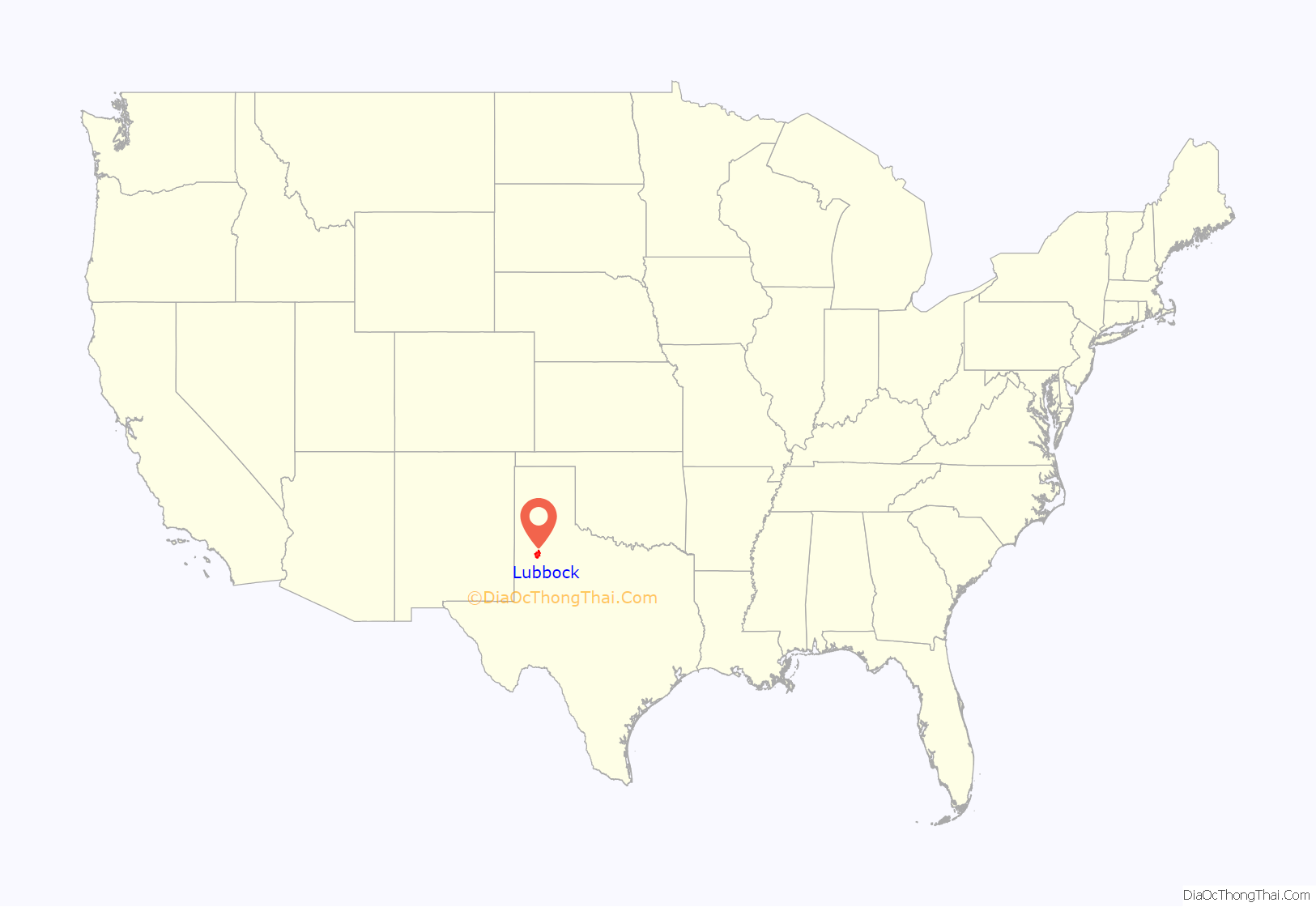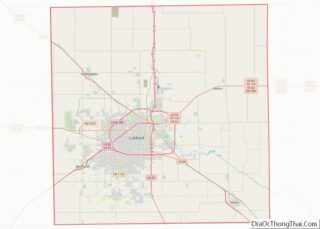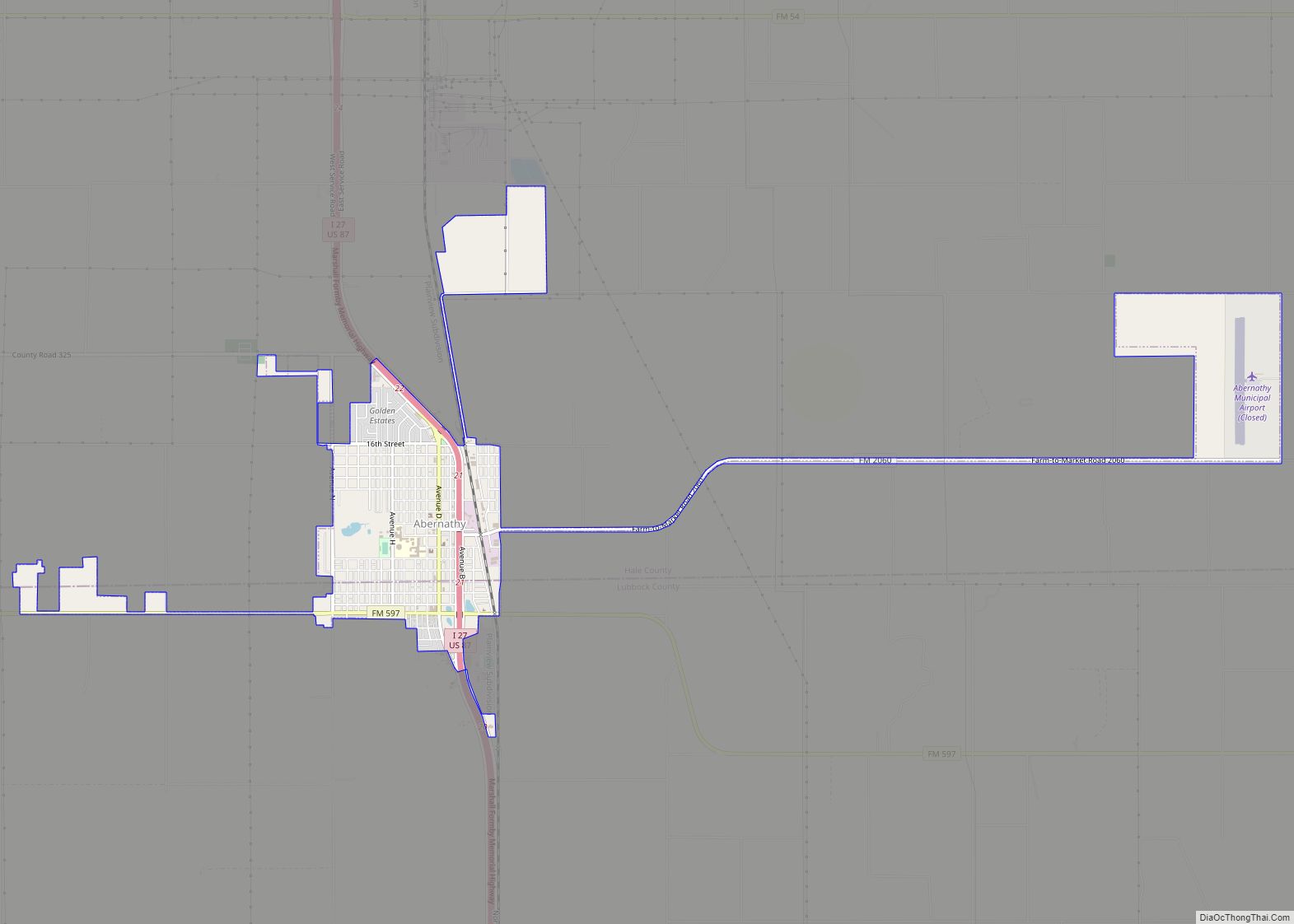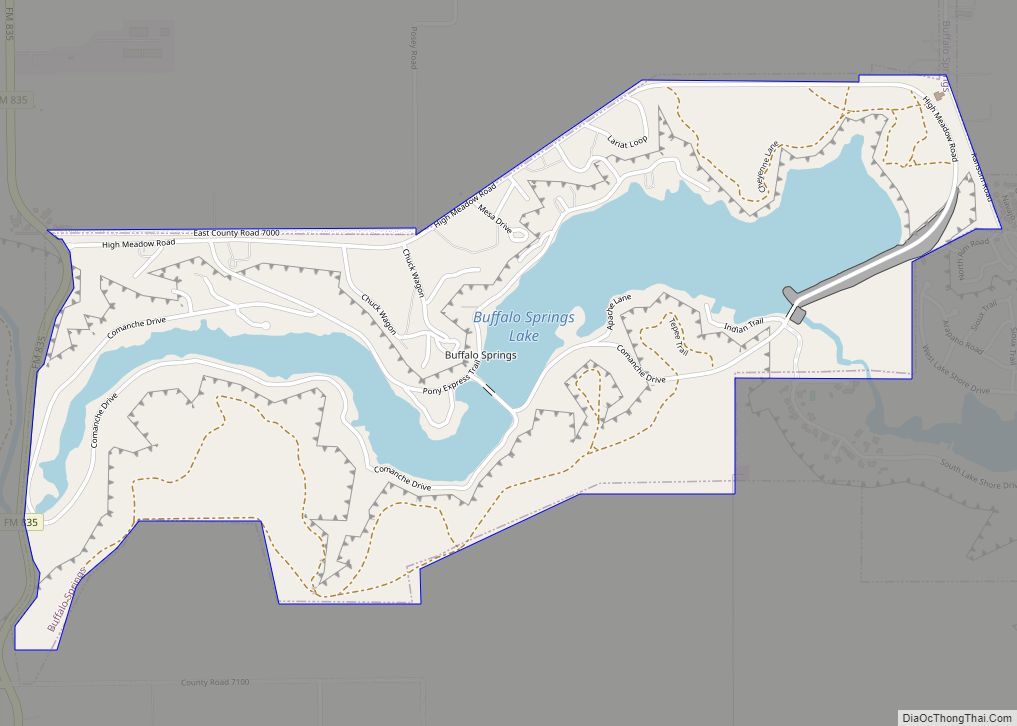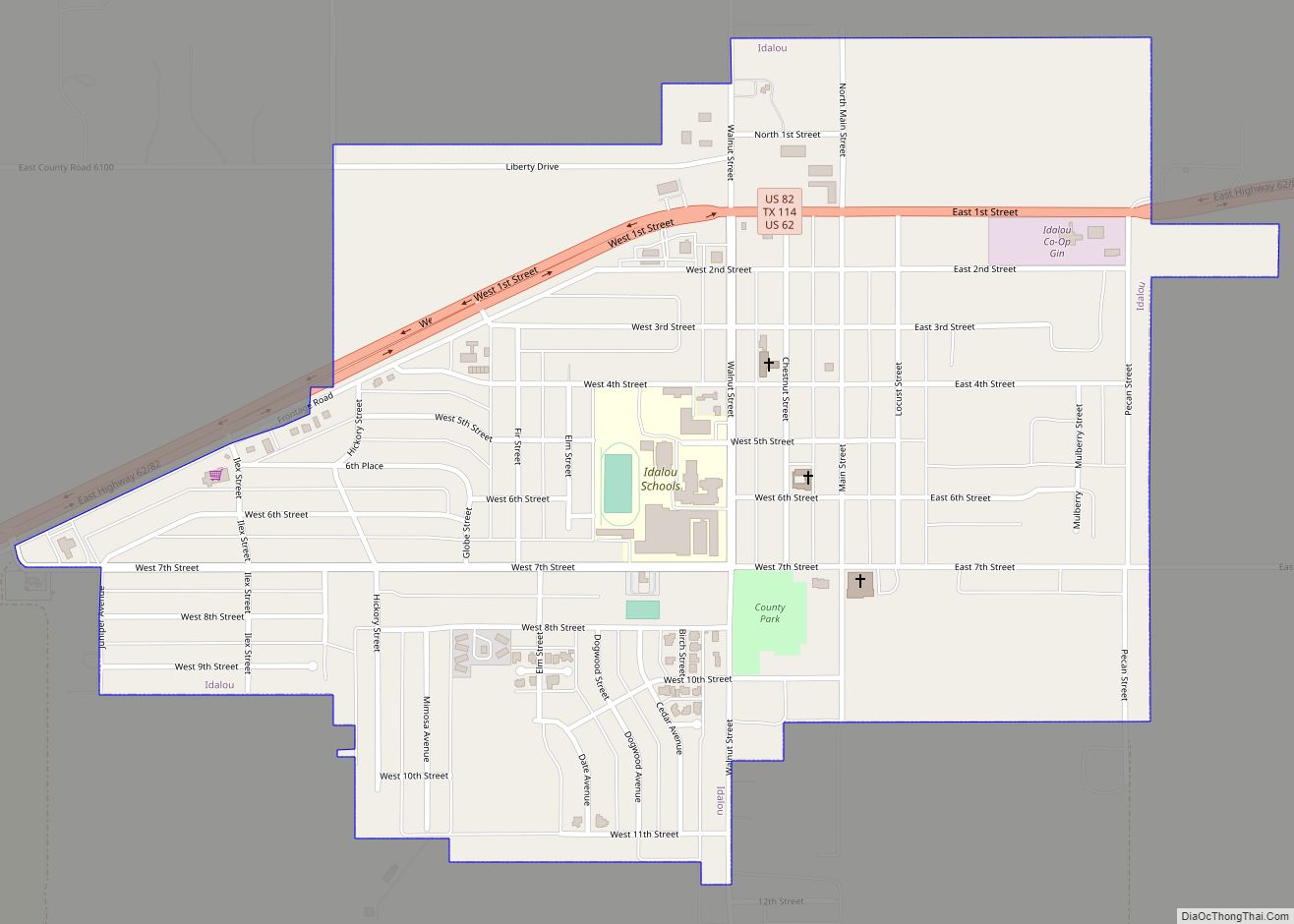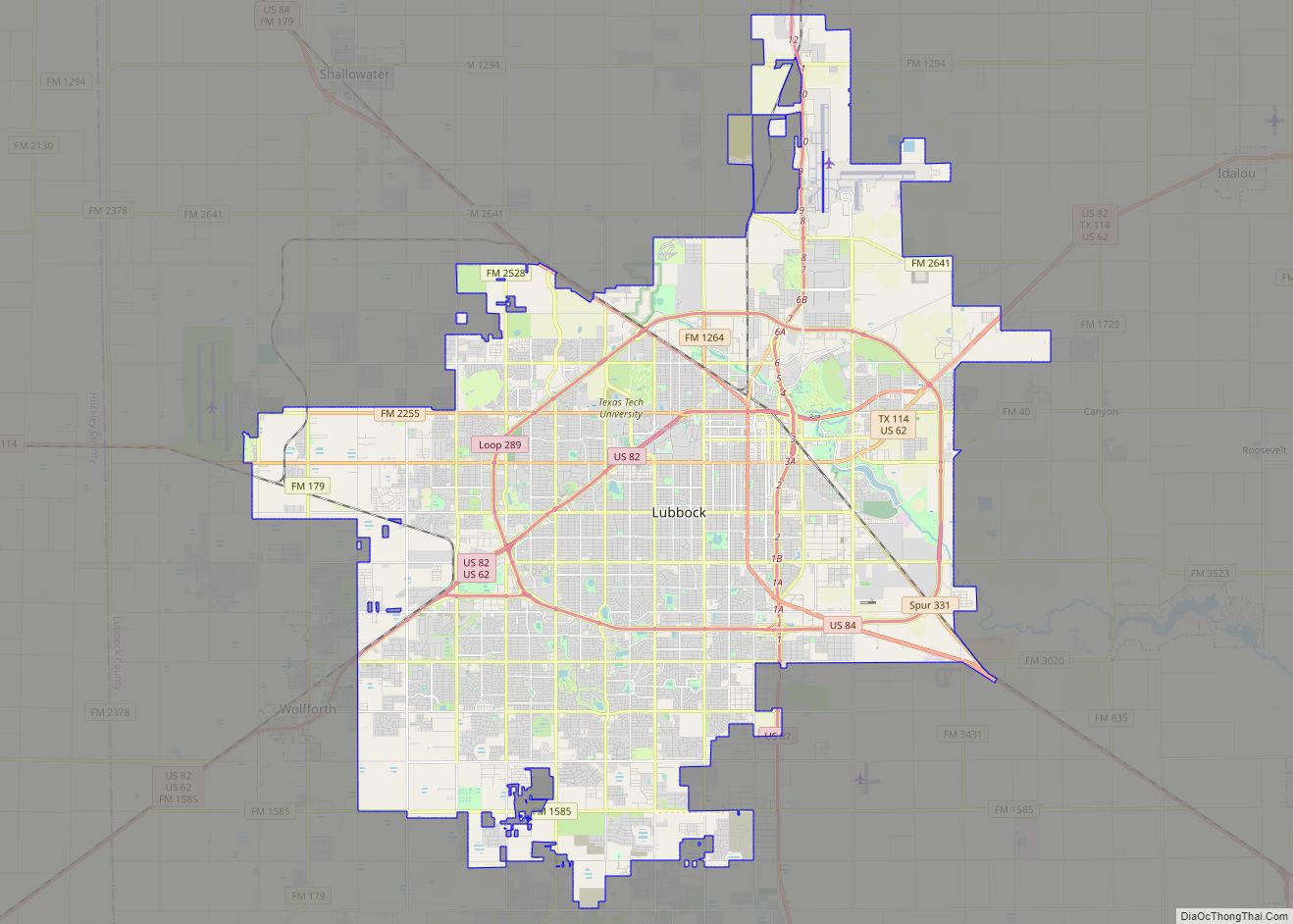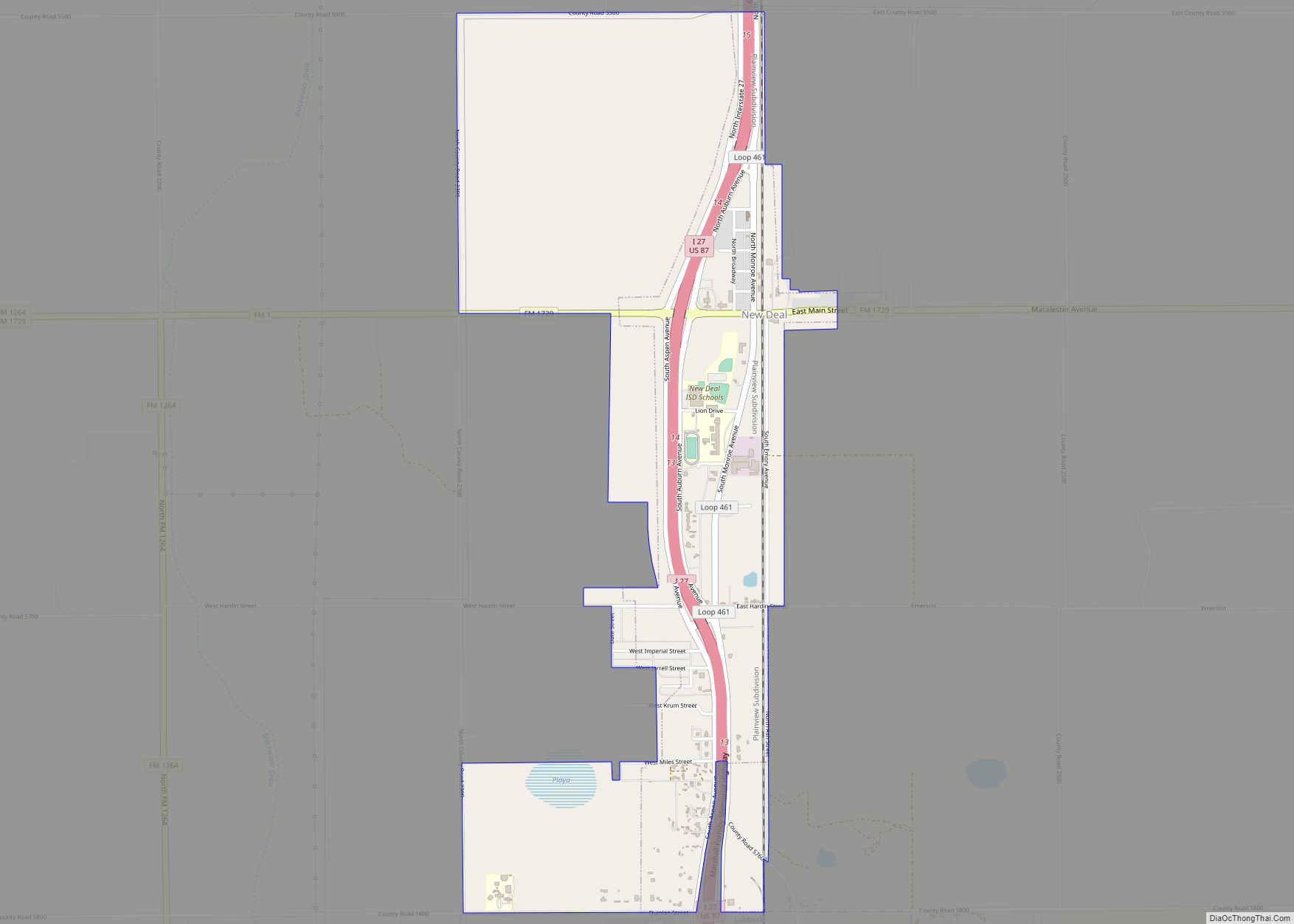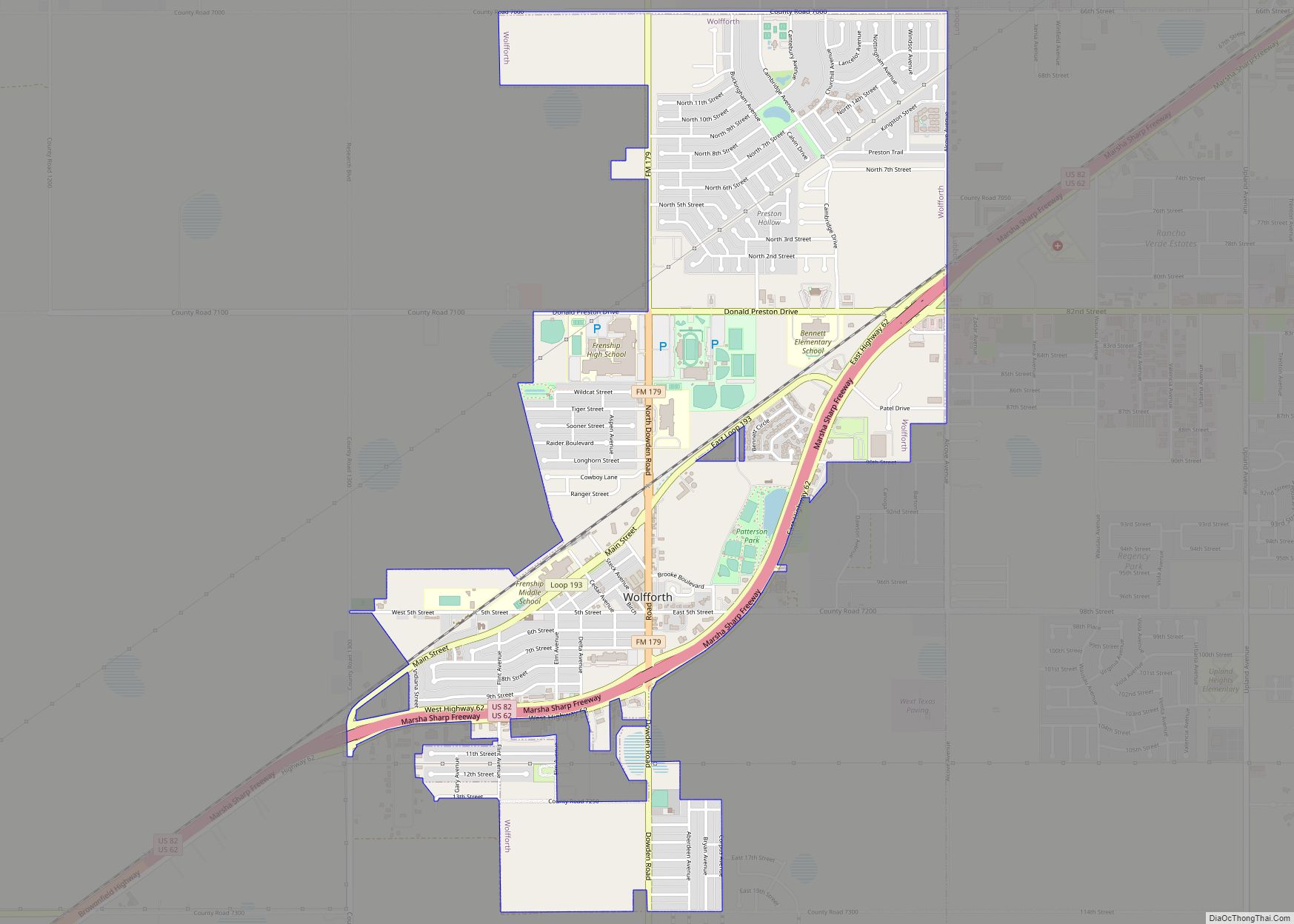Lubbock (/ˈlʌbək/ LUB-ək) is the 10th-most populous city in the U.S. state of Texas and the seat of government of Lubbock County. With a population of 260,993 in 2021, the city is also the 85th-most populous in the United States. The city is in the northwestern part of the state (the region is the Great Plains), a region known historically and geographically as the Llano Estacado, and ecologically is part of the southern end of the High Plains, lying at the economic center of the Lubbock metropolitan area, which had an estimated population of 325,245 in 2021.
Lubbock’s nickname, “Hub City,” derives from it being the economic, educational, and health-care hub of the multicounty region, north of the Permian Basin and south of the Texas Panhandle, commonly called the South Plains. The area is the largest contiguous cotton-growing region in the world and is heavily dependent on water from the Ogallala Aquifer for irrigation.
Lubbock is home to Texas Tech University, the sixth-largest college by enrollment in the state.
| Name: | Lubbock city |
|---|---|
| LSAD Code: | 25 |
| LSAD Description: | city (suffix) |
| State: | Texas |
| County: | Lubbock County |
| Incorporated: | March 16, 1909 |
| Elevation: | 3,202 ft (976 m) |
| Land Area: | 134.60 sq mi (348.63 km²) |
| Water Area: | 1.24 sq mi (3.22 km²) |
| Population Density: | 1,900/sq mi (750/km²) |
| Area code: | 806 |
| FIPS code: | 4845000 |
| GNISfeature ID: | 1374760 |
| Website: | www.ci.lubbock.tx.us |
Online Interactive Map
Click on ![]() to view map in "full screen" mode.
to view map in "full screen" mode.
Lubbock location map. Where is Lubbock city?
History
In 1867, the land that would become Lubbock was the heart of Comancheria, the shifting domain controlled by the Comanche.
Lubbock County was founded in 1876. It was named after Thomas Saltus Lubbock, former Texas Ranger and brother of Francis Lubbock, governor of Texas during the Civil War. As early as 1884, a U.S. post office existed in Yellow House Canyon. A small town, known as Old Lubbock, Lubbock, or North Town, was established about three miles to the east. In 1890, the original Lubbock merged with Monterey, another small town south of the canyon. The new town adopted the Lubbock name. The merger included moving the original Lubbock’s Nicolett Hotel across the canyon on rollers to the new townsite. Lubbock became the county seat in 1891, and was incorporated on March 16, 1909. In the same year, the first railroad train arrived.
Texas Technological College (now Texas Tech University) was founded in Lubbock in 1923. A separate university, Texas Tech University Health Sciences Center, opened as Texas Tech University School of Medicine in 1969. Both universities are now overseen by the Texas Tech University System, after it was established in 1996 and based in Lubbock. Lubbock Christian University, founded in 1957, and Sunset International Bible Institute, both affiliated with the Churches of Christ, have their main campuses in the city. South Plains College and Wayland Baptist University operate branch campuses in Lubbock.
At one time, Lubbock was home to Reese Air Force Base, located 6 mi (10 km) west of the city. It was established in August 1941, during the defense build-up prior to World War II (1941–1945), by the United States Department of War and the U.S. Army as Lubbock Army Airfield. It served the old U.S. Army Air Forces, and later the U.S. Air Force (USAF), after reorganization and establishment in 1947. The USAF base’s primary mission throughout its existence was pilot training. The base was closed 30 September 1997, after being selected for closure by the Base Realignment and Closure Commission in 1995, and is now a research and business park called Reese Technology Center.
The city is home to the Lubbock Lake Landmark, part of the Museum of Texas Tech University. The landmark is an archaeological and natural-history preserve at the northern edge of the city. It shows evidence of almost 12,000 years of human occupation in the region. The National Ranching Heritage Center, also part of the Museum of Texas Tech University, houses historic ranch-related structures from the region.
During World War II, airmen cadets from the Royal Air Force, flying from their training base at Terrell, Texas, routinely flew to Lubbock on training flights. The town served as a stand-in for the British for Cork, Ireland, which was the same distance from London, England, as Lubbock is from Terrell.
In August 1951, a V-shaped formation of lights was seen over the city. The “Lubbock Lights” series of sightings received national publicity and is regarded as one of the first great “UFO” cases. The sightings were considered credible because they were witnessed by several respected science professors at Texas Technological College and were photographed by a Texas Tech student. The photographs were reprinted nationwide in newspapers and in Life. Project Blue Book, the USAF’s official investigation of the UFO mystery, concluded the photographs were not a hoax and showed genuine objects, but dismissed the UFOs as being either “night-flying moths” or a type of bird called a plover reflected in the nighttime glow of Lubbock’s new street lights.
In 1960, the U.S. Census Bureau reported Lubbock’s population as 128,691 and area as 75.0 sq mi (194 km).
On May 11, 1970, the Lubbock Tornado struck the city. Twenty-six people died, and damage was estimated at $125 million. The Metro Tower (NTS Building), then known as the Great Plains Life Building, at 274 ft (84 m) in height, is believed to have been the tallest building ever to survive a direct hit from an F5 tornado.
In August, 1988, tens of thousands of people came to Lubbock, drawn by an apparition of Mary.
On August 12, 2008, the Lubbock Chamber of Commerce announced they would lead the effort to get enough signatures to have a vote on allowing county-wide packaged alcohol sales. The petition effort was successful and the question was put to the voters. On May 9, 2009, Proposition 1, which expanded the sale of packaged alcohol in Lubbock County, passed by a margin of nearly two to one, with 64.5% in favor. Proposition 2, which legalized the sale of mixed drinks in restaurants county-wide, passed with 69.5% in favor. On September 23, 2009, The Texas Alcoholic Beverage Commission issued permits to more than 80 stores in Lubbock. Prior to May 9, 2009, Lubbock County allowed “package” sales of alcohol (sales of bottled liquor from liquor stores), but not “by the drink” sales, except at private establishments such as country clubs. Inside the city limits, the situation was reversed, with restaurants and bars able to serve alcohol, but liquor stores forbidden.
After news broke about Planned Parenthood of Greater Texas hiring for a Lubbock location, Senator Charles Perry started a petition to keep Planned Parenthood out of Lubbock. On September 9, 2020, Senator Perry held a press conference with Representative Dustin Burrows and Representative John Frullo in support of Lubbock becoming a “sanctuary city for the unborn” through the passage of an ordinance, written by anti-abortion activist Mark Lee Dickson, which would outlaw abortion within the city limits. On November 17, 2020, the Lubbock City Council voted 7-0 against the ordinance outlawing abortion, leading the “sanctuary city for the unborn” initiating committee to file for the ordinance to be placed on the May ballot. Planned Parenthood began performing abortions on April 15, 2021, with early voting taking place on April 19, 2021. On May 1, 2021, the citizens of Lubbock voted on the ordinance with 62% in favor and 38% against, becoming the largest “sanctuary city for the unborn” in the nation. Planned Parenthood filed a lawsuit in an attempt to stop the ordinance from going into effect, but lost their case after the ordinance went into effect on June 1, 2021, and a federal judge dismissed the case. Planned Parenthood later appealed the decision to the 5th Circuit Court of Appeals, but in January 2022 withdrew their appeal.
Lubbock Road Map
Lubbock city Satellite Map
Geography
Lubbock is considered to be the center of the Llano Estacado portion of the South Plains, with Midland on the southern edge, and Amarillo denoting the northern boundary. According to the United States Census Bureau, as of 2022, the city has a total area of 135.85 sq mi (351.85 km), of which, 134.605 sq mi (348.63 km) of it (99.08%) are land and 1.244 sq mi (3.22 km), or (0.92%), is covered by water. The population density was 1,900 people per square mile (740/km).
Skyline
The tallest buildings in Lubbock are listed below.
Climate
Lubbock has a cool semi-arid climate Köppen classification BSk). On average, Lubbock receives 18.33 in (466 mm) of rain and 7.0 in (0.18 m) of snow per year.
In 2013, Lubbock was named the “Toughest Weather City” in America according to the Weather Channel.
Summers are hot, with 92 afternoons on average of 90 °F (32.2 °C)+ highs and 13.3 afternoons of 100 °F (37.8 °C)+ highs, with lows of 70 °F (21.1 °C)+ on 30 mornings. Lubbock is the 10th-windiest city in the US with an average wind speed of 12.4 mph (20.0 km/h; 5.5 m/s). The highest recorded temperature was 114 °F (45.6 °C) on June 27, 1994.
Winter afternoons in Lubbock are typically sunny and mild, but mornings are cold, with temperatures usually dipping below freezing, and as the city is in USDA Plant Hardiness Zone 7, lows reaching 10 °F or −12.2 °C occur on 1.5 mornings and 4.5 afternoons occur where the temperature fails to rise above freezing. The lowest recorded temperature was −17 °F (−27.2 °C) on February 8, 1933.
Lubbock can experience severe thunderstorms during the spring, and occasionally the summer. The risk of tornadoes and very large hail exists during the spring in particular, as Lubbock sits on the far southwestern edge of Tornado Alley.
See also
Map of Texas State and its subdivision:- Anderson
- Andrews
- Angelina
- Aransas
- Archer
- Armstrong
- Atascosa
- Austin
- Bailey
- Bandera
- Bastrop
- Baylor
- Bee
- Bell
- Bexar
- Blanco
- Borden
- Bosque
- Bowie
- Brazoria
- Brazos
- Brewster
- Briscoe
- Brooks
- Brown
- Burleson
- Burnet
- Caldwell
- Calhoun
- Callahan
- Cameron
- Camp
- Carson
- Cass
- Castro
- Chambers
- Cherokee
- Childress
- Clay
- Cochran
- Coke
- Coleman
- Collin
- Collingsworth
- Colorado
- Comal
- Comanche
- Concho
- Cooke
- Coryell
- Cottle
- Crane
- Crockett
- Crosby
- Culberson
- Dallam
- Dallas
- Dawson
- Deaf Smith
- Delta
- Denton
- Dewitt
- Dickens
- Dimmit
- Donley
- Duval
- Eastland
- Ector
- Edwards
- El Paso
- Ellis
- Erath
- Falls
- Fannin
- Fayette
- Fisher
- Floyd
- Foard
- Fort Bend
- Franklin
- Freestone
- Frio
- Gaines
- Galveston
- Garza
- Gillespie
- Glasscock
- Goliad
- Gonzales
- Gray
- Grayson
- Gregg
- Grimes
- Guadalupe
- Hale
- Hall
- Hamilton
- Hansford
- Hardeman
- Hardin
- Harris
- Harrison
- Hartley
- Haskell
- Hays
- Hemphill
- Henderson
- Hidalgo
- Hill
- Hockley
- Hood
- Hopkins
- Houston
- Howard
- Hudspeth
- Hunt
- Hutchinson
- Irion
- Jack
- Jackson
- Jasper
- Jeff Davis
- Jefferson
- Jim Hogg
- Jim Wells
- Johnson
- Jones
- Karnes
- Kaufman
- Kendall
- Kenedy
- Kent
- Kerr
- Kimble
- King
- Kinney
- Kleberg
- Knox
- La Salle
- Lamar
- Lamb
- Lampasas
- Lavaca
- Lee
- Leon
- Liberty
- Limestone
- Lipscomb
- Live Oak
- Llano
- Loving
- Lubbock
- Lynn
- Madison
- Marion
- Martin
- Mason
- Matagorda
- Maverick
- McCulloch
- McLennan
- McMullen
- Medina
- Menard
- Midland
- Milam
- Mills
- Mitchell
- Montague
- Montgomery
- Moore
- Morris
- Motley
- Nacogdoches
- Navarro
- Newton
- Nolan
- Nueces
- Ochiltree
- Oldham
- Orange
- Palo Pinto
- Panola
- Parker
- Parmer
- Pecos
- Polk
- Potter
- Presidio
- Rains
- Randall
- Reagan
- Real
- Red River
- Reeves
- Refugio
- Roberts
- Robertson
- Rockwall
- Runnels
- Rusk
- Sabine
- San Augustine
- San Jacinto
- San Patricio
- San Saba
- Schleicher
- Scurry
- Shackelford
- Shelby
- Sherman
- Smith
- Somervell
- Starr
- Stephens
- Sterling
- Stonewall
- Sutton
- Swisher
- Tarrant
- Taylor
- Terrell
- Terry
- Throckmorton
- Titus
- Tom Green
- Travis
- Trinity
- Tyler
- Upshur
- Upton
- Uvalde
- Val Verde
- Van Zandt
- Victoria
- Walker
- Waller
- Ward
- Washington
- Webb
- Wharton
- Wheeler
- Wichita
- Wilbarger
- Willacy
- Williamson
- Wilson
- Winkler
- Wise
- Wood
- Yoakum
- Young
- Zapata
- Zavala
- Alabama
- Alaska
- Arizona
- Arkansas
- California
- Colorado
- Connecticut
- Delaware
- District of Columbia
- Florida
- Georgia
- Hawaii
- Idaho
- Illinois
- Indiana
- Iowa
- Kansas
- Kentucky
- Louisiana
- Maine
- Maryland
- Massachusetts
- Michigan
- Minnesota
- Mississippi
- Missouri
- Montana
- Nebraska
- Nevada
- New Hampshire
- New Jersey
- New Mexico
- New York
- North Carolina
- North Dakota
- Ohio
- Oklahoma
- Oregon
- Pennsylvania
- Rhode Island
- South Carolina
- South Dakota
- Tennessee
- Texas
- Utah
- Vermont
- Virginia
- Washington
- West Virginia
- Wisconsin
- Wyoming
